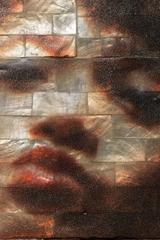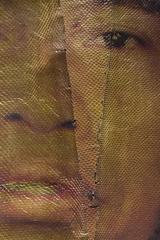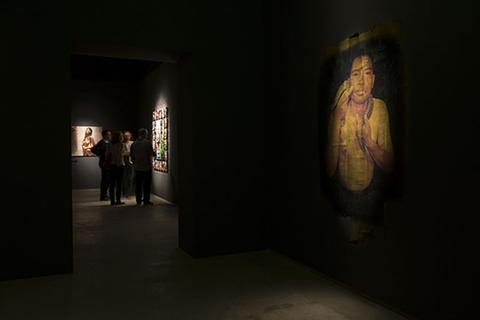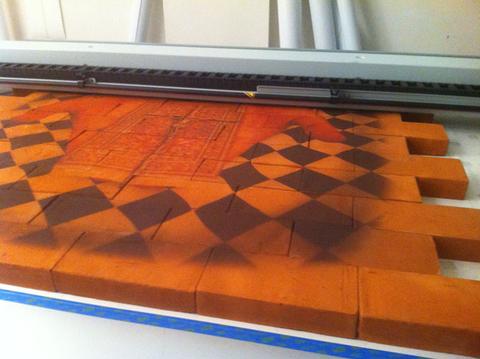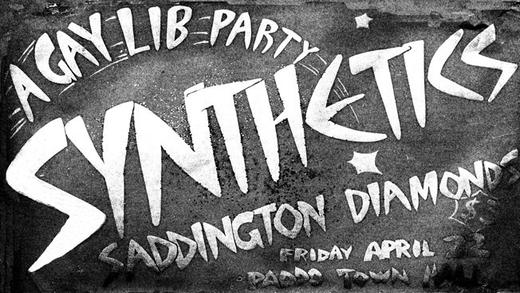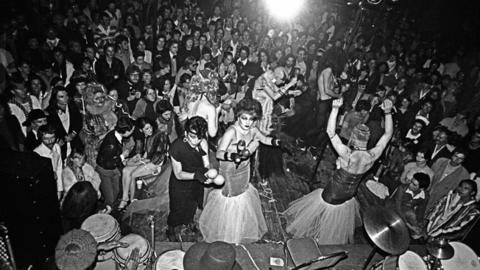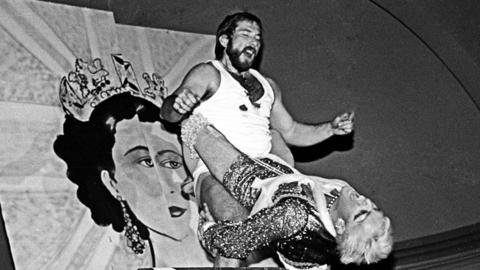Creative Paddington: 40 years of UNSWAD, ACP & Screen Metro 2015
Creative Paddington: 40 years of UNSWAD, ACP & Screen Metro 2015
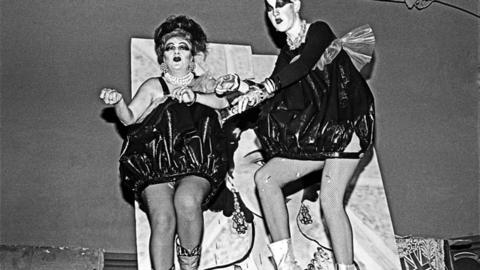 Images courtesy and © William Yang
Images courtesy and © William Yang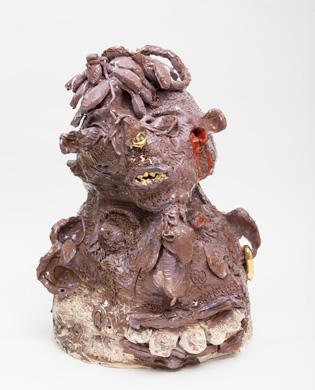 Blowhole 2, 2014, red terracotta, white earthenware, glaze, gold lustre and platinum lustre. Image © and courtesy of the artist and Gallery 9, Sydney.
Blowhole 2, 2014, red terracotta, white earthenware, glaze, gold lustre and platinum lustre. Image © and courtesy of the artist and Gallery 9, Sydney. Images courtesy and © Barbara Licha
Images courtesy and © Barbara Licha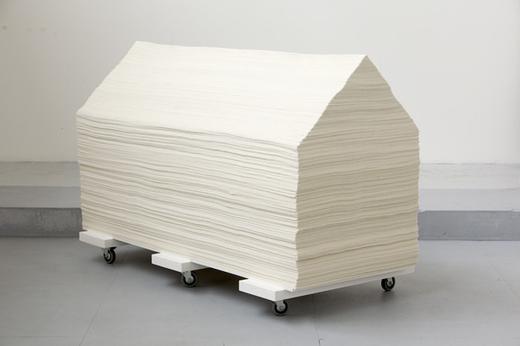 Image courtesy and © the artist, Safe, felt, wood, cotton & castor wheels, 2013.
Image courtesy and © the artist, Safe, felt, wood, cotton & castor wheels, 2013. Images: Installation and preparation of Shadow Land, 2014. Courtesy and © Michael Waite
Images: Installation and preparation of Shadow Land, 2014. Courtesy and © Michael Waite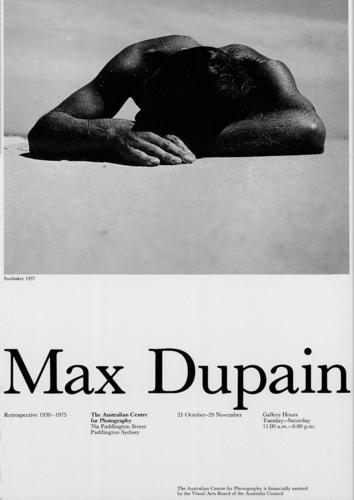
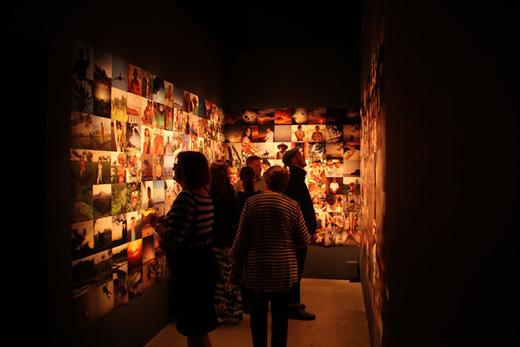
Emmanuel Angelicas | Cigdem Aydemir | Annmaree J Bell | Craig Boreham | Anthony Cahill | David Capra | Max Dupain | Stephen Dupont | Anne Ferran | Erin Good | Fiona Hall | Devris Hassan | Michael Herron | Petrina Hicks | Serena Hunt | Pollyxenia Joannou | Barbara Licha | Joshua Longhurst | Nakkiah Lui | Tracey Moffatt | Peter Nelson | Ramesh Marion Nithiyendran | Polixeni Papapetrou | Izabela Pluta | Jas Shennan | Anthony Waddington | Nicole Welch | Willliam Yang
In March 2015, the University of NSW Art & Design, Metro Screen and Australian Centre for Photography collaborated to celebrate their 40 year history and the creative legacy of Paddington.
Creative Paddington aims to recognise these three institutions that have born and nurtured great artists and filmmakers and continue to support creative practice. This collection of profiles and stories by Lola Pinder pays tribute to the rich community of photographers, sculptors, performers, directors, cinematographers, writers and painters that have come out of this area.
Emmanuel Angelicas
Emmanuel Angelicas is a Sydney-based photographer. His work is internationally celebrated, featured in the collections of major galleries and libraries from Sydney to Amsterdam.
Angelicas dreams large and defies any apparent conceptual and technical limitations in his photographic practice. His exhibition, BUKA, at the ACP in 2013 moved beyond the singular still image of photography, to evoke an experience. In the darken space and theatrical spot-lit works hung in the ACP galleries, Angelicas’ exhibition blurred the religious and the taboo. The immersive display of the works counters the ephemeral imagery that inundates the average viewer on a daily basis. Here, the photograph in series and its surrounds to hope capture the audience’s imagination.
Angelicas appreciates the potential of modern printing processes. For the production of BUKA he, and David de Freitas at Vision Graphics, used ultraviolet printing techniques to transfer Angelicas’ photographic works onto non-traditional surfaces such as silk, snake-skin, mother-of-pearl and brick. By doing so Angelicas’ photographs become sculptural with each image extending beyond its frame.
His work slips between styles, evading traditional photographic codes. His work is intuitive, he is considered in his study of character, both in his social interactions and through his photographic portraiture.
Angelicas’ work is imbued with contradictions that test the borders of pleasure and pain, beauty and eroticism. His depictions of sex, drugs and the underground in projects from Marrickville to Pattaya, Nippon and Bali have meant many have labelled him as the bad boy of photography. However, Angelicas’ knack for documenting human nature has another side. The photographer has harboured a long artistic relationship with the Westmead Children’s Hospital, beginning over 20 years ago with his contribution to the project Handle with Care when he was selected as one of 10 photographers to document wards of the hospital, that was then located in Camperdown. This year Angelicas returns to The Children’s Hospital with an ambitious project of 20 photographers, documenting in 20 photographs, a variety of hospital departments over 20 hour stints. This is the first project for the Australian Museum of Contemporary Photography (AMCP) since its reestablishment this year. Angelicas is cofounder and director of the AMCP. This group supports the personal and the creative in photography, outside of the dictates of the industry.
Cigdem Aydemir
 Image: © A-M Galllery, Photographer: Marion Moore.
Image: © A-M Galllery, Photographer: Marion Moore.
Cigdem Aydemir is a Sydney-based performance and installation artist. Much of her work investigates the history and social politics surrounding her Australian-Muslim identity, in particular looking at the veiled woman in gender and religious politics.
Aydemir’s public performance piece Extremist Activity addresses the discussion of the burka and niqab. Spurred on by the idea of these forms of female dress as a security threat, Aydemir’s performances have seen her hide people, obfuscate shopping trolleys, bicycles, swing sets, and even cover a kids playground climbing sphere under her niqab. The public was welcomed to continue to climb on the sphere, as a way to demystify the ‘other’, and allow outsiders to physically inhabit the Muslim female body politic.
In 2013 Aydemir won the Redlands Konica Minolta Art Prize, in the Emerging Artist category, for her work Bombshell. This single channel video parodies Marilyn Monroe’s famous scene from The Seven Year Itch in that white dress. Aydemir playfully recreates the scene, instead wearing a black burka, while the soundtrack includes the sounds of distant bombs. The artist explores the social implications of dress and uses humour to interrogate the scrutiny and control of women’s choices in the fear-driven west.
In July 2014, Aydemir created the public work Plastic Histories for the Vryfestival in Bloemfontein, South Africa. This commission was part of the Programme for Innovation in Artform Development (PIAD), for the support of long-term interdisciplinary research, cross-cultural engagement, and development for the arts. The project saw public monuments of President MT Stayn and President CR Swart at the University of the Free State (UFS) main campus covered in pink shrink-wrap. Covering these male public figures in pink plastic-wrap commemorated the contribution of women in post-Apartheid South Africa, reflecting of the gendered histories represented in public spaces,. The project also included an Augmented Reality application as well as an exhibition at the Johannes Stegmann Art Gallery of digital prints, video works and pink-plastic-wrapped busts from the UFS permanent art collection.
The app was created in collaboration with Sydney artist Warren Armstrong. It was free to download and allowed users to engage with numerous other monuments around the city of Bloemfontein. These public sculptures would appear, when viewed through a tablet or smart phone, as with the physically shrink wrapped works, pink. The app also included audio recordings of Afrikaans, Sotho, Zhosa and English poetry. With this app, Aydemir created an accessible virtual platform wherein public spaces may acknowledge alternative histories that can shape and mould modern social identity.
Aydemir also made the catalogue for this show free and accessible online through the digital publishing platform, Issuu.
Aydemir completed a Bachelor in Design and Art Education and a Graduate Certificate in Sculpture Performance and Installation between 2003 and 2010. In 2013 Aydemir was the recipient of the Freedman Foundation Travelling Arts Scholarship and was exhibited in the award’s annual show at the Ivan Dougherty Gallery in Paddington. In 2012 she received the Edna Ryan Award for Creative Feminism as well as Highly Commended for the John Fries Memorial Prize. Aydemir is currently completing her Masters of Fine Arts at Sydney College of the Arts.
This post is part of the Art Month Event Creative Paddington taking place on March 7th in conjunction with Metro Screen and UNSW Art & Design.
Annmaree J Bell
Annmaree J Bell is an award-winning, Sydney-based producer. She is the co-founder of Azure Productions, with managing director John Frank. Bell has over 15 years experience in project management, development, and production. Bell graduated from Metro Screen with a Certificate IV in Screen and Media in 2003. She has subsequently lectured and moderated panel discussions and workshops at the film school. Her productions have been shown in national and international festivals from Brisbane to Berlin, Tehran to Palm Springs.
Bell is grateful for meeting many crew members, writers and directors through Metro Screen. She has produced several acclaimed short films with Metro Screen affiliate Craig Boreham, as well as producing the 2013 Metro Screen First Breaks program winner Latte e Miele, written by Louisa Mignone & Andrea Demetriades.
While Bell has had the support from funding body Screen Australia for two of her shorts Drowning and Vinyl in 2009 – many of her projects have involved crowd-sourced funding. Pozible, Australia’s original and largest crowd-funding platform allows local producers, such as Bell, raise funds for independent films. The money might be donated by friends, family and colleagues, but also includes donations from perfect strangers who believe in the project. This is invaluable as a way to build a support network and audience for a film before its release. Furthermore it is a great way to celebrate, for both Australian filmmakers and audiences, a dedication to creativity and inspiration in local cinema outside of, or despite of the dictates of traditional funding bodies.
Bell is currently developing feature films Darker after Midnight with Michael Chrisoulakis and Skymaze with Nat Amoore. Teenage Kicks, directed by Craig Boreham is to be released later this year.
This post is part of the Art Month event Creative Paddington taking place on March 7th in conjunction with Metro Screen and UNSW Art & Design.
Craig Boreham
 Image: courtesy and © Craig Boreham
Image: courtesy and © Craig Boreham
Craig Boreham is an Australian film director, producer and writer. He currently works at Metro Screen as the Projects and Production Coordinator.
Influenced by indie, lo-fi, filmmaking and New Queer Cinema during his studies in Sydney in the 1990s, Boreham’s films reflect on desire, marginalised sexuality and youth. In 2007 Boreham and Dean Francis co-directed the short Stray, produced by Channel Free, Metro Screen’s Youth Production Unit and Twenty10- Gay and lesbian Youth Support. The film worked with youth from the Twenty10 organisation to create stories of country versus urban living and teenage sexuality. The film was well received, screening at the acclaimed NewFest- The 19th New York Lesbian, Gay, Bisexual & Transgender Film Festival and Frameline31-San Francisco International LGBT Film Festival and being picked up for American and European distribution.
I was able to talk with Craig about film and television in today’s ‘digital age’. I asked about his thoughts on the advent of the video camera and online social platforms for streaming content — Boreham was most optimistic about the democratisation of voices in filmmaking, particularly against the “old guard” of Australian film and television. He identifies how we are still in the early stages, so to speak, of online multi-platform spaces. Boreham believes in the power of story telling in filmmaking, explaining that the craft of compelling story telling is bound to prevail amongst the onslaught of amateur content now available online, ‘it doesn’t matter if you create it with high end HD cameras or shoot it on your phone, it will still find an audience’. He suggests that these accessible and innovative distribution models might give the film and television landscape ‘a much needed shake up’.
I asked Boreham whether he thought there was still a place for the weekly TV show or an outing to the cinema? He describes how audiences are much more demanding in watching content on their terms, which is particularly evident with iView, Netflix and other VOD platforms. However, he confidently states that “I don’t think cinema is going anywhere. There is something uniquely social about sitting in a space and experiencing a film with an audience that you can’t get at home no matter how big your screen is”. Boreham talks of tugg.com, amongst other distribution models, as a format wherein an audience may have control and still maintain a social celebration of long-form filmmaking.
Boreham is currently completing his first feature film, Teenage Kicks, an extension of his earlier short Drowning (2009, funded by Screen Australia). This feature tells local stories of youth, grief and desire.
The film was funded through a Pozible Campaign, demonstrating the value of crowd funding for the future of independent Australian film. Online funding campaigns such as the one for Teenage Kicks also present the interesting potential for communication between filmmakers and the public. This interactive avenue is a great development of Australian cinema today, in that it allows engagement with potential audiences and for the viewer to participate in the film-making process, as well as connecting film-makers with supporters as well as connecting filmmakers with supporters, hearing corroborating stories and gaining feedback on their project.
Boreham graduated from the University of Technology Sydney (UTS) and the Australian Film Television and Radio School (AFTRS). Boreham has won several prestigious prizes, including the Teddy Award nomination at the 2005 Berlin Film Festival, Best Film Melbourne Queer Film Festival and Best Film at Sydney Mari Gras. He has screened internationally with many of his short films including Transient (2005) And Everything Nice (2006), Drowning (2009) Ostia- La Notte Finale (2011). In 2008 the Fundación Triángulo in Madrid held a retrospective of Boreham’s short films; Cinema of True Poison.
Anthony Cahill
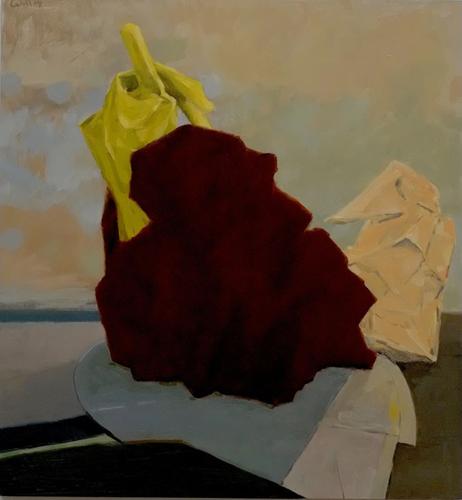 Images courtesy and © Anthony Cahill.
Images courtesy and © Anthony Cahill.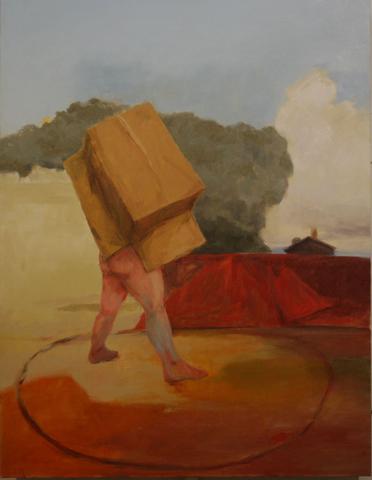 Images courtesy and © Anthony Cahill.
Images courtesy and © Anthony Cahill.
Anthony Cahill is a Sydney-based artist whose practice moves easily between mediums, technically adept in everything from watercolour and oils to charcoal. He attended the UNSW Art & Design from 1980 until 1982. Cahill currently lectures in drawing and painting at the National Art School and holds Master’s degree in Fine Arts from the school.
I was able to ask Cahill about his memories of UNSW A&D, what was then, the City Art Institute. He described his studies as ‘the best of times’. After completing a two-year Art Certificate at Meadowbank TAFE, Cahill valued the inspirational and encouraging group environment at the Paddington institution. He remembers great teachers at the time, such as Alan Oldfield, Syd Ball, Kevin Conner, Roy Jackson and Liz Ashburn, Graham Kuo and the self-motivated model of learning as important in his development at this time.
Cahill recalls fond memories of Paddington and its surrounds during his time at art school. He mentions the Oxford Street bookshops as regular haunts and many a memorable evening spent over a cheap meal. He recalls how the area was a great source of inspiration, explaining ‘when I was a student the art scene supplemented what we did with our studies, put things into a local context’. Cahill has been connected with the area for much of his career, with his first solo exhibition at Rex Irwin in 1985 and last year he exhibited at the Queen St Art Gallery.
Cahill references a love of the absurd as his inspiration for his practice. His paintings look at humankind and the landscape. His works contain a touch of the surreal in titles such as Accidental Landscape for DM and Impossible Landscape Kangaroo Street. Although not overtly political his practice examine the environment; a glove takes on a foreboding human presence, echoing Christo’s Wrapped Coast at Little Bay, or a man trapped in a cardboard box blind to his surrounds as he walks in circles, implies the disconnect of humans and nature. His practice addresses the relationship between the natural and the man-made environments.
Cahill is currently showing in the group show Openings at AirSpace Projects and his a solo show, The Other Place until March 28th at the Pine Street Creative Art Centre.
David Capra
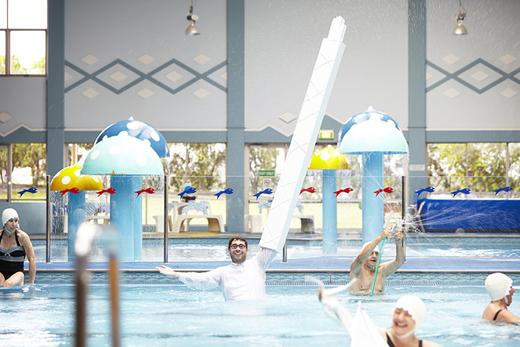 David Capra, Water Birth, Campbelltown Arts Centre
David Capra, Water Birth, Campbelltown Arts Centre
David Capra is a multidisciplinary artist working with performance, dance and community engagement. Capra sees his studies at UNSWA+D as fundamental to his foundations as an artist. I spoke with Capra and he explained how significant the university gallery, Kudos Gallery, had been to him, as a place he frequented regularly and was able see the work of his peers.
I asked Capra about his fondest memory of Paddington and he recounted a great historical moment he shared with his grandmother;
“I have a memory of my grandmother visiting COFA to see an end of year exhibition. When she arrived she was quite surprised as, the painting studios where I worked was the exact site of her first home when she arrived from Italy to Australia. She told me stories of the local Paddington Italian community during the 50s and 60s and how thrilling it was living in a busy metropolitan city.”
Capra’s work is influenced by his everyday interactions, the wonderful characters he meets, and the places he inhabits; social engagement and site-specificity are his media. He described to me how working in community cultural development, last working at the Auburn Community Development Network, has shaped his own art practice. He describes his own work as intercessions, “these are practices that initiate healing”, he says. Capra uses banners and co-ordinated movements in his performances as a device to unify groups of people, similar to religious ceremony.
In 2011, as part of Tiny Stadiums, Capra developed Ministry of Handshakes, shaking the public’s hands with a 2.5 metre prosthetic arm. This work was inspired by an encounter with Elizabeth, a woman who has shaken people’s hands on the Campbelltown train for years.
As part of his Maters degree, Capra developed the project Birthing Things in Spirit: The Water Birth, in 2013. This has a synchronised swimming performance, created with local members of the Active, over 50s fitness group at Eaglevale Central’s Aquatic and Fitness Centre. The work is inspired by Australian actor and swimmer Annette Kellerman and the Hollywood swimming star Esther Williams. Channelling the elegance of these swimming beauties, Capra and the group become mid-wives, orchestrating a water-birth… Discussion of water births and sharing movies and soundtracks related to the theme, were an important part of the project’s development and building the group’s bond. Capra has continued a relationship with the participants.
Capra’s absurd, humorous, and sincere works aim to question social norms and unite people, bridging connections in our society that is deeply entrenched in todays insular lifestyle.
Capra is heavily involved in the use of the arts in education. In 2010, Capra was involved in the Pilot Arts NSW ConnectED project based in schools across Sydney. Then, in 2012 as part of his Parramatta Council Artist Residency, Capra worked with artists Justene Williams and Mikala Dwyer at Rydalmere Public School.
Capra completed his Bachelor of Fine Arts with honours in 2004 at UNSW A+D (then COFA) and then retuned to complete his masters in 2013. In 2012 he received the Australian Postgraduate Award and a New Works Grant from the Australia Council. In 2013 he won the Black Prize, Emerging Artist Award for his work Year of Jubilee. Since 2013 he has been a member of the SafARI Committee and Firstdraft Gallery’s Co-Director. His work has been shown by Performance Space, Campbelltown Arts Centre, Firstdraft, Tiny Stadiums and the Museum of Contemporary Art.
Capra is busy with several new projects; he has just finished curating a Wollongong City Gallery exhibition Che Cosa! a show, he describes as ‘looking at the notion of all things Italian”. He is also co-directing the film festival Motion Pictures: A festival of New Cinema in Fairfield, with artist Kate Blackmore. This year, The Museum of Contemporary Art has invited Capra to create new work commissioned for the Bella Room, a space designed for students with specific needs.
This post is part of the Art Month Event Creative Paddington taking place on March 7th in conjunction with Metro Screen and UNSW Art & Design.
Max Dupain
The Australian Centre for Photography (ACP) has historically celebrated and supported the country’s photographic heritage. In 1975 the ACP gave Max Dupain his first major retrospective, when the galleries were still located at 76a Paddington Street, Paddington. ACP co-founder David Moore was Dupain’s assistant in the late 40s and continued a relationship with the photographer, as seen in the intimate portrait of Dupain below.
Max Dupain (1911-1992) remains one of the most celebrated twentieth century Australian photographers. His image Sunbaker is deeply etched in the Australian vernacular as a portrait of the nation. Dupain himself, although he came to resent the fame of the image, described ‘its been around, I suppose as a sort of icon to Australian life.’ This work first entered Australia’s popular consciousness with the ACP’s first retrospective of Dupain’s work in 1975; Max Dupain – A Retrospective 1930-1975. The image was used for the exhibition poster.
Although Sunbaker has become a staple image when it comes to the name ‘Max Dupain’. However, the vast body of work that has been shown in several exhibitions at the ACP over the past 4 decades show there was much more to this legendary Australian photographer’s nearly 60 year oeuvre. Dupain captured much of Sydney in particular, including the city’s architecture, people, society and beach culture. His use of hard light and sharp focus lent to the representation of Australia, its modernism and harsh sun.
Dupain’s formalist aesthetic echoed his philosophy for image making; he celebrated the clean and simple in photography. In 1947 Dupain wrote a feature in Contemporary Photography arguing ‘it is necessary to develop photography with particular reference to its mechanistic form. Let it be automatic as much as possible, the human element being selection of viewpoint and moment of exposure, subsequent technicalities being performed skilfully and scientifically.’ His black and white photography captured a celebration of the industrial and the honest in his subject matter.
In 1999 (after the move to Oxford Street in 1981) Dupain’s Sunbaker returned to adorn the ACP gallery walls for the centre’s 25th anniversary. In the catalogue essay for the exhibition, Martyn Jolly stated ‘The Sunbaker has come a long way, yet it remains simultaneously a private snapshot and a public icon. The Sunbaker is still embedded in time, but his time is now a multiple exposure of a changing Australia’. Today, the Sunbaker hangs on the walls of the social space at the ACP, in the form of the original 1975 exhibition poster. Max Dupain’s iconic image has witnessed the 40 year history of the ACP and will continue to watch the evolution of photographic practice.
Stephen Dupont
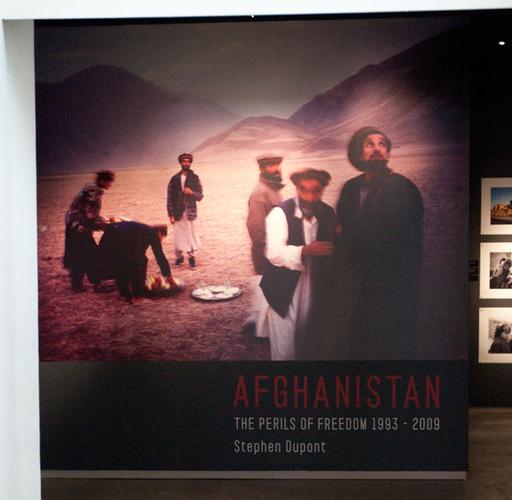 SONY DSC
SONY DSC
Internationally acclaimed documentary photographer, Stephen Dupont has covered stories across the world including Afghanistan, Kashmir, Iraq, Rwanda, Indonesia, East Timor and Papua New Guinea.
He has won acclaimed prizes such as, the Robert Capa Citation, a Bayeux War Correspondent’s Prize, the World Press Photo Award, the W. Eugene Smith Grant, as well as the Robert Gardener Fellowship from Harvard.
Dupont has had a relationship with the ACP for over a decade including exhibitions, artist’s talks and professional development workshops. He first exhibited with the ACP in 2002 as part of Witness: An Exhibition of Australian Photojournalism. The exhibition showed the tenacity and intimacy of great photojournalism and the potent political and aesthetic strengths of the photographer’s work. The exhibition also included Paul Blackmore, David Dare Parker, Michael Amendolia, Dean Sewell, Trent Parke, Narelle Autio, Glen Hunt, Ashley Gilbertson and Jack Picone.
In 2005 Dupont exhibited as part of the group show PNG-Papua New Guinea. He showed his well-known series Raskols, life sized portraits of the ‘Kips Kaboni’ or ‘Red Devils’, PNG’s oldest raskol gang. The portraits show a precarious blurring of intimacy, respect and violence. The large format Dupont uses allows these works to become a meditation for the viewer, upon the individual, as well as the nature of photojournalism. Dupont reflects the role today of the documentarian in photography is to create a narrative, to slip backstage and express an intimacy or an essence of human behaviour in each context.
Dupont is among those who continue to champion the importance of photojournalism and documentary series in photography despite national and international news outlets letting off their photographic staff in droves. Dupont is now director of the Reportage Photojournalism Festival, the creation of documentary photographers Michael Amendolia, Jack Picone, David Dare Parker and Dupont in a living room at Bondi Beach back in 1999. This idea was borne out of the frustrations they were experiencing at the time at not being able to exhibit their work to a wider public and for it to be aesthetically appreciated. From the festivals beginnings, in a show with two slide projectors and slides of the four photojournalists’ works in the Valhalla Cinema in Glebe. In 2013 the festival saw documentary projects projected large scale on the Sydney foreshore, between the Opera House and the Harbour Bridge.
Dupont also joined with fellow Australian conflict photographers in the cooperative °SOUTH, along with Ben Bohane, Michael Coyne, David Dare Parker, Ashley Gilbertson, Tim Page and Jack Picone. ACP’s 2009 exhibition °SOUTH – War showed a collection of works from these men, who chose to collaborate and share their work as independent works of art, instead of competing as conflict photographers for hire. As such, this collaboration intended to create greater social change through their photography and draw awareness to the impact of war.
In 2010 Dupont had an expansive solo show at the ACP, Afghanistan: the Perils of Freedom 1993-2009. Bringing together 15 years of work Dupont had covered in Afghanistan, the exhibition became an installation of photojournalistic practice. The mural-like hanging, as well as the sequential chronicling of people and conflicts, celebrated Dupont’s stories from the region.
Stephen Dupont will be exhibiting at the ACP in June this year with his show The Outside Land. He takes his audience back to PNG, this time exploring the cultural erosion and western influences in the urban regions of the country. He is also published in this year’s volume of international arts magazine Matador Q In Praise of Photography. This edition is edited by Robert Pledge and also includes social documentarian heavies Sebastião Salgado and David Burnett.
Anne Ferran
 Images: Installation and preparation of Shadow Land, 2014. Courtesy and © Michael Waite
Images: Installation and preparation of Shadow Land, 2014. Courtesy and © Michael Waite Images: Installation and preparation of Shadow Land, 2014. Courtesy and © Michael Waite
Images: Installation and preparation of Shadow Land, 2014. Courtesy and © Michael Waite
Anne Ferran is one of Australia’s most acclaimed contemporary photographic artists. Her body of work spans from the 1980s and has focused on femininity and representation, as well as more recently Australian female history.
Throughout her career Ferran has had a long relationship with the ACP, from tutoring to exhibiting. After finishing an undergraduate in Visual Arts at Sydney College of the Arts, Ferran tutored in photographic workshops at the ACP and made great use of the darkroom, She says ‘[ACP director] Alasdair Foster let me work [in the darkroom] for free, which was great as I was hard up at the time’. Ferran was a board member of the ACP in the 80s and part of the Photofile editorial committee when Geoffrey Batchen was at the helm. Her first exhibition at the ACP I Am the Rehearsal Master was shown in 1989 and most recently, her 30-year retrospective, Shadow Land, closed in January this year.
Ferran’s work investigates the materiality of photography; from photograms to allusions of daguerreotypes, her work is borne through a celebration of the photographic medium. Her Lost to Worlds series, of which selected works were recently shown within Shadow Land at the ACP, was shot on a Hasselblad, the 6x6cm negatives then scanned and printed onto aluminium. Previously the work had been printed on paper, yet it is the transfer to metal that gives the works a physical presence. This also harks back to 19th century photographic processes. Light leaks from the camera evident in the images highlight the materiality of these works. The over-exposed areas of the images reveal the naked aluminium underneath, this becomes highly reflective under gallery lights. The metal surface and the tilted gaze of the camera lens in these works create an experiential connection for the viewer, perhaps of shame and certainly of melancholia towards the history of the landscape.
As seen in her retrospective exhibition, Ferran’s work is often made up of project or series-based works that investigate formal and conceptual aspects of an idea, with careful thought to the diverse nature of presentation in each. I asked Ferran if she thought, in the digital age, in which the singular image has dominated through the use of camera phones and social media platforms, whether there was still a case for the photographic series. Ferran is eloquent and optimistic in her response; she observes that the interest in individual works has freed photography from a tradition on the photographic series. She states ‘personally I like those photographic “series” where the works are visually different yet clustered around the same nucleus of ideas’. She explains ‘they seem to take less for granted, and they demand more of their audience, which to me is a good thing’.
Recently Ferran has been working with performers, for her portraits of figures improvising with lengths of industrial style, coloured felt. One such series, Box of Birds examines history and memory, as well as representations and implications of concealment through the movements of the figures with the material. Ferran explains that she is interested in continuing to work with performers in her photography. She is excited to meet new performers and find new locations as she travels through France and Finland this year. 2015 also see Ferran showing in Bookmarked at Stills Gallery in March and The Photograph and Australia at the Art Gallery of NSW until June.
Ferran is represented by Stills Gallery in Paddington, Sydney and Sutton Gallery, Melborune, and is part of major national collections including Artbank, Art Gallery of New South Wales, Art Gallery of South Australia, Monash Gallery of Art, National Gallery of Australia and the National Gallery of Victoria.
Erin Good
Director Erin Good launched her filmmaking career after receiving the First Break funding grant from Metro Screen in 2010 for her first short Abbie. The film went on to win Best Short Film at the Tasmanian Breath of Fresh Air (BOFA) Film Festival and was sold to Qantas.
Good describes how much she liked the Metro Screen community after her experience with Abbie, and so she ‘hassled them for ages’ to give [her] a job,which they eventually did.’ Good worked at Metro Screen as course coordinator until 2013.
I spoke with Good about finding an audience in the age of social media. She celebrates the current practice of sharing, through online platforms, short films and web series. Contrary to the fear that the digital age may have splintered the professionalism of the industry, Good celebrates opening the gates wider for budding filmmakers. Good hopes online platforms for screening work might facilitate follow-up television series and feature films, ‘if they garner an audience’, she explains. Online release might be seen as a soft form of distribution of one’s work in order to gauge support for it.
I asked Good whether this multitude of creative voices now available to the public, through mobile phone photography and video and rapid uploading opportunities, might mean a watering down of artistic expression. She pointedly replied: ‘if we have entered an era of the banal in artistic expression it would be because of fear not because we can shoot stuff on an iPhone’.
Good sees short films as a stepping stone for filmmakers, as a demonstration of their talent. Good, however has finally stepped said stone as she is currently in development with Alone writer Huna Amweero to create her first feature film Please Help. She hopes that this will be her next project to go into production.
As with other filmmakers in this blog series I asked Good, ‘where do you want to see Australian film going in the coming years?’
She replied:
‘I would like to see the models of distribution changed. I would like to see some films funded and widely distributed to VOD without the need for a theatrical release.’
Good holds a Graduate Diploma in Directing from AFTRS, which she completed in 2013. She is a driven filmmaker, and many funding bodies have recognised her ability. She was awarded Talent Escalator Funding by Screen Australia to complete a director’s attachment on the production The Principal. Good has also just completed her latest short Alone, to be released this year, with the support of the Emerging Filmmakers Fund, Screen NSW. Her 2013 short film My Mother Her Daughter won the Silver Cinematography Award from the Australian Cinematographer Society. Last year Good’s short film The Wonderful was selected for the Academy Accredited LA Shorts Festival, was nominated for an Australian Director’s Guild Award and won the ATOM award.
Erin Good is represented by RGM Artists.
Fiona Hall
 Exhibition poster courtesy and © Australian Centre for Photography Archive
Exhibition poster courtesy and © Australian Centre for Photography Archive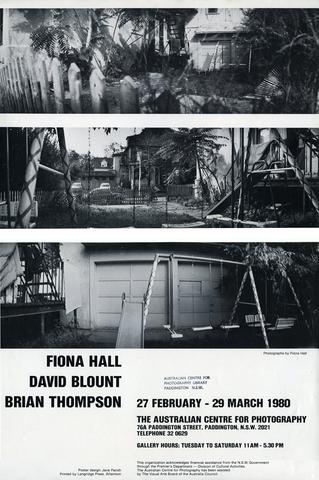 Exhibition invite courtesy and © Australian Centre for Photography Archive
Exhibition invite courtesy and © Australian Centre for Photography Archive
Beginning her career in photography, Fiona Hall is now one of Australia’s leading contemporary practitioners. Hall will represent Australia this year at the 56th Venice Biennale. She is the first artist to exhibit in the Denton Corker Marshall – designed pavilion in the Venice Giardini.
Fiona Hall’s four-decade career has seen great shifts in her practice, covering a variety of mediums, from photography, painting, sculpture and installation. The photographic medium allowed Hall to investigate expressions of the human condition and pictorial narrative with ease.
In 1975 Hall showed in Six Australian Women Photographers at the Australian Centre for Photography. Just out of art school at this time, Hall was predominantly shooting black and white, square format photographs. She went on to exhibit frequently through the 1980s in solo and group exhibitions at the ACP. In 1980 Hall showed with David Blount and Brian Thompson. In this group show Hall began to experiment with panoramic images as a means of capturing continuity in a scene and show greater detail. Another memorable exhibition at the ACP was her solo-show Recent Works, in 1983, which showed her black and white documentary photographs of the everyday in Australia.
Towards the end of the decade Hall began to formalise her distinctive practice. This was shown in her 1989 series The Divine Comedy exhibited at the ACP, and then again in 1990 her series Words, also shown at the gallery. These works were large format Polaroid prints of crafted scenes in which Hall constructed details tin, plastic and paint. In these two series Hall interrogated the photographic form as more than mere documentation or representations of ‘truth’- these scenes blurred the bounds of photography, painting and sculpture. Hall’s constructed photographic environments, the layering of textures and tone and detail, and gave way to her later sculptural and installation practice. Arguably, the most famous example of this is her sardine tin works Paradisus Terrestris, that splice human body parts with sprouting details of plant-life.
Hall’s early exhibitions at the ACP celebrate the history of photography, innovation, humanity and nature. Her last works to be show at the ACP were in 1999 from her Polaroid series The Price is Right. Hall photographed handcrafted items, a pair of underpants crafted out of tin or a Buddha cut from a Coke can, in considering contemporary living and consumer culture.
It will be exciting to see the culmination of themes Hall has spent her career investigating at the 2015 Venice biennale. Her installation Wrong Way Time is purportedly an expression of her concerns for the future of the environment, the economy and human nature.
Devris Hasan
Devris Hasan is an experienced cinematographer, camera operator and editor. He tutors in Editing, Production and Documentary filmmaking at Metro Screen, he has also lectured at NIDA and TAFE. Hasan has worked across Australia in film television, advertising and online content. He is well-known for his work as cinematographer on the Channel 7 series Trapped, shot in Broome, in 2008.
Hasan’s work has explored the potential of storytelling through multi-format digital media and its possibilities in teaching, particularly in remote areas. He led the Central Coast OnScreen workshop in 2013, a Metro Screen and ABC project, that looked to present short, two-minute documentaries on the region. These were screened online through ABC Open, a community participation project that publishes and screens short stories created by regional Australians.
Hasan further explored the modern blending of personal life and digital technology in the enthralling short Entanglement Theory, in which he worked as the Live Action Cinematographer. The film mixes the physical and the virtual, depicting real-time dance and online animated Second-Life avatar in choreographed performances. The two male leads, the dancer and his avatar, examine the relationship between the real and the virtual through movement. The short demonstrates the possibilities of working with second-life animation and the innovation of emerging technical tools available to filmmakers.
Hasan completed an Advanced Diploma in Film and Television from TAFE WA in 2001 and a Masters in Cinematography in 2006 through the Australian Film, Television and Radio School. He has worked with Granada ITV Studios and Southern Star as well as Tourism Australia.
Michael Herron
Michael Herron is a Sydney-based artist, specialised in drawing and painting. He studied a Bachelor of Art at UNSW A&D (then the City Art Institute) from 1986-88, before receiving the Sydney Morning Herald Travelling Art Scholarship, as well as the Dyason Bequest from the Art Gallery of NSW, allowing him to set off to the Mora Dyring Studio at the Cite Internationale de Artes in Paris. From here Herron honed his painting skills, often en plein air.
In his more recent paintings he explores the convergence of culture and nature; the affects of the human hand in scenes of landscaped wildlife, manicured gardens and holiday caravan parks. Herron reflects on the duality of nature’s harmony and modern intervention in the landscape as he expressively depicts elements of both abstraction and realism in many of his canvases. His abstract landscape painting portrays deep meditations on the colour and space of the Australian landscape.
Michael has been teaching painting and drawing for the past 17 years, including classes at the Workshop Arts Centre, Willoughby Arts Centre, Australia’s Drawing Trail Festival, Wild Valley Art Park, Blacktown Arts Centre and the Art Gallery of NSW.
Herron was represented by Paddington Gallery from 2005 until last year and exhibited in several solo and group shows throughout this period. In 2013 he also exhibited, The Abstract Heart at the Butchers Hook Gallery, William St, Paddington. Herron has shown at Tim Olsen Gallery in Paddington and Woollahra, as well as the Paddington Terrace Gallery, First Draft Gallery, Watters Gallery, The National Trust Garden Everglades, The Art Gallery Ballarat, The Woodford Academy and the S. H. Ervin Gallery.
Last year Herron was included in S. H. Ervin’s group show Utzon’s Opera House, alongside Lloyd Rees, William Dobell, Brett Whiteley, Martin Sharp, John Olsen, Peter Kingston and Ken Done. In 2014 Herron was also accepted into the NSW Parliament Plein Air painting prize.
Petrina Hicks
 Petrina Hicks, Lauren (eyes open), 2003. Courtesy Andreas Wiessner and Christian Wichura
Petrina Hicks, Lauren (eyes open), 2003. Courtesy Andreas Wiessner and Christian Wichura
Petrina Hicks is a Sydney-based photographer and video artist. Her signature large-scale, hyper-real, fine-art photography is celebrated nationally and internationally.
Hicks’ commercial background deeply informs her aesthetic. Her works are tightly controlled set-ups, with even lighting and a clean finish. She subverts the slick commercial style images with conceptual underpinnings of the uncanny, the abject or the sexualised. Through ever-so-slight ruptures in the image, Hicks plays with our contemporary conditioning of reading commercial photographs, she lures in an audience only to taunt them with unsettling under-currents, contrary to the pay off of everyday advertising. Hicks encourages this audience dissatisfaction in order to draw the viewer towards the tension between the surface and content in her work, and with that, the disconnect between fiction and reality in advertising.
In recent years Hicks has also found success in her video works. The Crysalis was included in the Guirguis New Art Prize, the new national acquisitive art prize featuring contemporary Australian artists. In this piece, Hicks manipulates state-of-the-art technology in order to reveal the sexualisation of women in the media and the use of seduction in advertising. She films in profile the mouth of a woman licking at a stem of flowers, using a Phantom high-speed video camera. She films at 800 frames per second in order to create a fluid slow motion effect that heightens the sexuality of the action, but also an element of disgust or embarrassment at the high definition, dripping of saliva from the figure.
Hicks has exhibited and taught at the ACP. She has described how the place helped her when she was starting out;
‘The ACP has played a vital role in my career, providing me with a place to process and print my photographic works in the early years – at this time I was a regular user of the darkroom & studio facilities, and having regular access to these facilities was instrumental in developing my arts practice.’
Hicks has exhibited globally, recently being selected to show at Volta New York in March 2015, the 17th International Videobrasil, Brazil, the Pingyao International Photography Festival in China and Art Platform, Los Angeles. She has been offered residencies at La Cité, Paris Residency, AGNSW and an eight-month fellowship with Akademie Schloss Solitude in Stuttgart, Germany.
Hicks has been awarded various notable prizes and residencies including the 2014 Bowness Photography Prize and the Josephine Ulrick Photography Award for Portraiture and ABN Amro Emerging Artist Award also in 2008. Her work is included in many national collections including the AGNSW, NGV, GOMA and Artbank.
This post is part of the Art Month Event Creative Paddington taking place on March 7th in conjunction with Metro Screen and UNSW Art & Design.
Serena Hunt
Serena Hunt began her relationship with Metro Screen through their short course in Producing and Production Management. Since then, she has had over 20 years experience in film, television and advertising and was invited back as a guest lecturer and tutor in Assistant Directing.
Hunt has worked on a number of films and television series, including Paul Fenech’s Fat Pizza, Housos and Swift and Shift Couriers and feature films Housos Vs Authority and Pizza Vs Housos, as well as Facing Evil, the documentary series Behind Mansion Walls, the cult festival favourite The Last Horror Movie and her own short film Kerplonk.
I was able to talk with Hunt about her world and the shifting nature of the film and television industry in the digital age. I began by asking Hunt what she thought about the video-phone-filmmaker phenomenon, and whether this altered the professionalism of the field. She explained she values the phenomenon of video filmmaking as an opportunity for emerging creative voices to practice their skills but was not indicative of filmmakers making a career for themselves.
Hunt explains how the digital era does not mean the death of film. She says ‘I love the cinema, so that will never die for me’. Hunt values storytelling and good filmmaking and argues these aspects are not lost on the small screen. The world has entered a new era in which many people watch movies and television through catch-up online and ‘stack and binge’ approaches to television series. Although this may mean a change from the tradition of weekly television program viewing, long-form cinema and television series still hold an important place for viewers, television and filmmakers need to adapt to make content accessible for everyone in their busy lives.
LP: With the advent of camera and video-phones, and the popularity of social media platforms and YouTube, the notion of the amateur and the professional has been blurred for filmmakers. What are your thoughts on this shift as a professional in the field?
SH: It has made the whole process of filmmaking much more accessible to people everywhere. Every kid and his dog can ‘make a short movie’ with a phone and home editing software. This does not make them professional filmmakers. It places people in a much better position to practice filmmaking skills and launch themselves into the industry as a professional later down the track, if that’s their goal.
I’m old school and trained to make films with a creative collaboration. Today, I see a different type of filmmaker emerging – I like to call it the ‘one man band approach’. There’s a place for it, but it’s not the best business model. It’s the difference between one person toiling over a project for months, maybe years, or a team of professionals churning out content of a much higher quality. Compare it to building a house – you can have one person slowly doing everything but you need to wait a lot longer before you can live in it, and they might be great builders but not so good at electrics or plumbing or design. If you bring in experts in each field, including a good project manager then you can have a house you can live in much sooner and of much better quality.
LP: Where do you want to see Australian film and television going in the coming years?
SH: I want to see Australian film and TV take a chance on some fresh ideas. Instead of throwing government funding to big budget productions that are guaranteed returns they could fund a whole heap of low to medium budget films – comedy, art, drama and create work for more people. The big budget films will be made no matter what, just means they have to spend the money more wisely and maybe have chicken instead of fish a few more days at the catering table.
Pollyxenia Joannou
 Image courtesy and © the artist, Safe, felt, wood, cotton & castor wheels, 2013.
Image courtesy and © the artist, Safe, felt, wood, cotton & castor wheels, 2013.
Pollyxenia Joannou completed her visual arts degree at the City Art Institute (UNSWAD) in the early eighties. She states how this period was a special and enlightening time for her as an artist, where her perception and approach to her work was nurtured and was allowed to expand.
Joannou describes her time at the City Art Institute as a ‘right place, right time thing’. At this time exhibitions at galleries such as the ACP also aided Joannou’s development as an artist, introducing her to a myriad of possibilities for innovation and story telling in her practice. Joannou remembers in general, her time spent in the Paddington arts scene as treading new and innovative ground. She explains that ‘there were also more art spaces/galleries that seemed less precious and more willing to take a chance’. After graduating, Joannou worked at the ACP in the early nineties, during the directorship of Denise Robinson. She describes the innovation and inspiration of multimedia installation and the new generation of artists including Tracey Moffatt and Bill Viola.
Joannou’s sculpture and painting practice centres upon elemental properties of materiality and beauty. Her works explore memory, absence and quietude, through formal minimalism. Joannou looks to strip down the organic environment to geometric shapes and tactile forms and so moves away from digital technologies. Joannou’s work reflects upon history and development in the built environment.
Joannou’s work shares a gamut of influenced from Joseph Beuys to Rachel Whiteread, and including Ellsworth Kelly and Malevich. Safe, pictured above, is a work from her latest exhibition Devolving, 2014. The stacked layers of unbleached felt on wheels creates a precarious work examining security and the ephemeral. Joannou is inspired by her built environment, her art shows a beauty and foreboding, as the artist reflects on contemporary living and landscape.
Over Joannou’s 30-year career she has exhibited in acclaimed group exhibitions including the Sulman Prize, the Archibald Prize, and the Portia Geach Memorial Award. In 2006 she was given the prestigious Tim Storrier National Art School Residency at La Cité Internationale des Arts in Paris.
Joannou describes how she works on several projects at once daily, working by trial and error. She likes to produce in series and enjoys the evolution of narratives as she develops an idea in her art. She explains: ‘if an impasse happens, I usually retrace back to a point that will take me down another road.’ Joannou is currently developing her work on felt and ‘after making a few pieces [I] have settled on the “Émigré Series’. We wait to see what the project brings.
Joannou is currently a sessional lecturer at the National Art School. She is represented by Conny Dietzschold Gallery.
Barbara Licha
 Images courtesy and © Barbara Licha
Images courtesy and © Barbara Licha Images courtesy and © Barbara Licha
Images courtesy and © Barbara Licha
Barbara Licha works with varying mediums including painting, printing and sculpture. Polish born, Licha moved to Sydney in the 1980s and graduated with a BA from UNSW Art & Design in 1988 and a Graduate Diploma in Art in 1989. She fondly recalled for me the old big building at Flinders Street and its creative atmosphere, she described the unrenovated collection of buildings that created a unique environment. Licha had just arrived in Australia when she started to study.
UNSW Art & Design introduced her to Sydney’s art scene. The Holdsworth Galleries in Paddington offered Licha her first solo show in 1984 in Australia and she is still appreciative of art dealer Gisella Scheinberg’s push in introducing new artists to Paddington. ‘Paddington was one of the places to be seen, and to have a show’. She recalls ‘walking was the best way to getting know the place, so I did walk a lot. Oxford Street offered, and still offers, various feelings, and smells of the past and present’.
Her practice reflects a contemporary expressionism, wherein she explores the complexity of the human condition. She describes ‘reality and dreams, past and present, good and bad, anger and love inspire me’. Licha currently is working more with sculptural forms, her three-dimensional sketches in wire examine contemporary existentialism. The works are both harsh and whimsical in the representation of both the physical and emotional states of in human behaviour and contemporary urban living (see works below).
Licha is working to relate her wire sculptural practice with ceramic work for this year’s International Outdoor Ceramics and Sculpture Plenary in Poland, Boleslawiec. Coming up she is part of this year’s Adelaide Perry Prize for Drawing from 27 February to 27 March. Also in March her drawings will be part of group exhibition at Maitland Regional Art Gallery.
Licha is represented in several international public and private art collections, including the National Library of Australia, the NGA and the Academy of Fine Art, Poland.
This post is part of the Art Month Event Creative Paddington taking place on March 7th in conjunction with Metro Screen and UNSW Art & Design.
Joshua Longhurst
Joshua Longhurst’s filmmaking is concerned with politics and social commentary. He looks for honesty in his work and values truth, and engagement with tough subject matter, as a great strength in writing.
I recently asked Longhurst about Australian film and television in the digital age.
Starting out in the industry Longhurst values today’s online platforms as a space for exploration and development for artists, ‘ I feel Youtube can make the exploration process as an artist more accessible’ in order for them to find their voice and find an audience for their ideas.’ And yet Longhurst brings up the interesting conundrum of the existential, introspective processes of the actor, while social media is very such a platform for the extroverted, public-relations-savvy as he states ‘it would be a huge shame if exciting writers or directors weren’t produced just because they don’t use Twitter.’ Longhurst fears the tenets of truth and poetry in the art of filmmaking have given way to high volumes of poor quality, vanity projects, developed to fulfill demand and current trends in the film industry.
Despite the multiplication of access for developing filmmakers and screenwriters to shoot and share their projects, this is not being translated at a professional level, where television networks and film production companies and funding bodies aim to ‘please’ audiences, through safe projects. Like many others in the industry, Longhurst speaks of the need for a greater diversity of voices telling important and honest narratives in Australian film and television. Longhurst emphasises the need to offer daring, provocative projects at the public level, in order that Australian culture does not remain complacent.
Longhurst’s training is in acting, studying with the Australian Theatre for Young People. He had no formal experience in screenwriting when he applied and was selected to be part of the Metro Screen ArtStart Young Screenwriters Program.
Longhurst spent his time in the program developing the script for his first short film, Ravage. The film was part of the 2012 MetroScreen First Breaks program, from which the director Jaime Lewis and Longhurst worked closely with mentors from Metro Screen. Ravage went on to be named as a finalist of the 2013 Sydney Film Festival Dendy Awards for Australian Short Films and nominated for Best Live Action Short and The Rouben Mamoulian Award for Best Director.
In 2014 Longhurst continued his relationship with Metro Screen when he received the Metro Screen Dream Accelerator Pitch competition for his television series Off the Grid. This gave Longhurst the opportunity to pitch against other state finalists at Melbourne’s Screen Forever conference.
Longhurst plays Sam in fellow Metro Screen alumni Annmaree J Bell and Craig Boreham’s feature film Teenage Kicks, due to be released this year. He is currently working on a television series.
Nakkiah Lui
Nakkiah Lui is fast becoming a household name in Australian film and television as a writer and actor. Lui is a Gamilaroi/Torres Strait Islander woman who grew up in Mount Druitt. She writes about her own personal histories in her work and explores tensions of urban Aboriginal communities, and the persistent effects of institutional racism.
Lui co-wrote and starred in Black Comedy, ABC’s recent Aboriginal sketch comedy series, which employs humour as an incredibly powerful tool for political and social engagement and critique. The screening of this show on ABC is an important milestone in the representation of Indigenous Australians on national television.
In her latest play, Kill the Messenger which she wrote and stars in as herself, Lui tears down the traditions of theatre, interrogating the fourth wall and questioning the audience on black and white relations in Australia.
Lui’s work adds to a shift in how Australian Indigenous stories are told and are perceived. Kill the Messenger experiments with audience-actor relations and so alters stereotypical themes of Aboriginal suffering and victimhood. Lui openly questions the audience’s perceptions and actions–She says, tongue-in-cheek, in one of her monologue asides, ‘this is ‘my tale of black oppression’.
In one of the many articles about Lui’s talent, TimeOut Sydney Arts describes her as Mt Druitt’s answer to Lena Dunham. This kind of comparison seems indicative of Australian arts more generally, as artists are positioned in relation to, and following from America as a cultural Centre. Of course, both Dunham and Lui are very talented, and may share certain characteristics, but as young Australian artists innocative and creative work in 2015, can they not be validated in their own right? Nakkiah Lui is certainly one to watch while she hones her unique voice.
2015 has been busy for Lui, she has already debuted the musical satire Blak Caberet in Sydney, for the Sydney Festival, and opened her second play Kill the Messenger at the Belvoir theatre to critical acclaim. Kill the Messenger finishes this weekend at the Belvoir. Lui was the inaugural recipient of The Dreaming Award from The Aboriginal and Torres Strait Island Arts Board of the Australia Council in 2012. The same year, Nakkiah also received the first Balnaves Foundation Indigenous Playwright award. In 2014, Nakkiah was awarded the Malcolm Robertson New Playwright Prize. Lui is a creative in the rise in Australia.
Tracey Moffatt
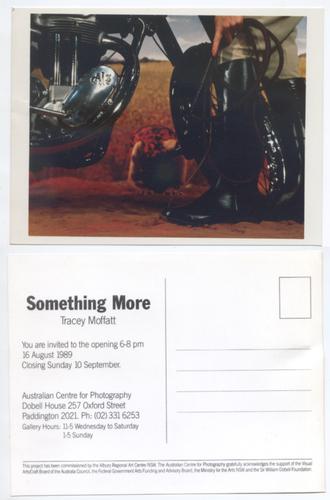 Exhibition invite courtesy and © Australian Centre for Photography Archive
Exhibition invite courtesy and © Australian Centre for Photography Archive
The Australian Centre for Photography offered Tracey Moffatt her first solo exhibition in 1989. Moffatt exhibited her now iconic photoseries Something More. This sequence of six coloured cibachrome and three monochrome works portrayed the artist as the subject in works reminiscent of B-grade Hollywood stills. Something More established Moffatt’s signature style of self-portrait, stylised scene-scapes and catapulted Moffatt to the heights of Australia’s contemporary art scene.
The ACP has shown Moffatt throughout her career as she remains at the forefront of contemporary practice. In 2006 Moffatt was included in SynCity, a collaboration of d/Lux/MediaArts and the ACP’s exhibition of experimental screen culture. The show brought together established and emerging video artists to celebrate the history of digital media. Moffatt’s artistic status was then celebrated in 2009 with the ACP exhibition Inheritance, a group show that took Moffatt’s highly acclaimed 1994 series Scarred for Life, a parody of the picture essay format of Life Magazine, as starting point for representations of contemporary family life through photographic and video media. Moffatt’s work was also included in Hijacked III in 2012 a survey of contemporary photographic practice at the time, including video, archival images, documentary photography and Internet media.
Moffatt shifts easily between mediums. Her photographs reflect her film-making experience. The tableaux she creates are carefully staged and contain heavy narrative components. By the same means, Moffatt’s films reflect her strong photographic sense in their cinematography. She uses the popular and immediate aspects of film photography to conjure melodrama and kitsch in her works. Moffatt borrows historic references from pop-culture and the art canon in equal spoonfuls in her contemporary storytelling.
Forever the subject of reinvention in her own photographic practice, Tracey Moffatt straddles past and present photographic practices in her work. She references the aesthetics of analogue photography and embraces the accelerating progress of digital imaging. Moffatt’s work looks at ways of re-imagining the past and rethinking the future; interrogating gender, post-colonialism, socio-economics and the psyche. Her photographic and film works assure her place as one of Australia’s most internationally renowned contemporary artists.
Tracey Moffatt received the Infinity Award for art by the International Centre of Photography, New York, in 2007 and the Australian Council Visual Arts Award in 2012.
She is Represented by Roslyn Oxley9 Gallery, located in Paddington, and Tyler Rollins in New York.
Moffatt is exhibiting at the Perth Institute of Contemporary Arts from February 19th.
Peter Nelson
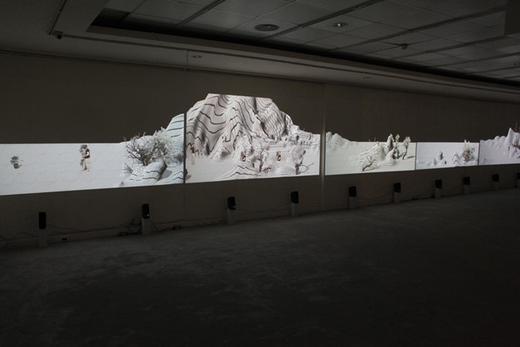 Extensions of a No-Place (Wen Zhengming), Taipei Artist Village, 2013, courtesy and © Peter Nelson
Extensions of a No-Place (Wen Zhengming), Taipei Artist Village, 2013, courtesy and © Peter Nelson
Peter Nelson is a multidisciplinary artist and curator working across drawing, painting, video, 3D animation and 3D printed sculpture. Nelson graduated from UNSW Art & Design with first class honours and the University Medal in 2006 and completed a Masters by research in 2012 with an Australian Post-Graduate Award and the Vice Chancellor’s Excellence Scholarship.
The school and the area were important part of Nelson’s formative years as an artist. I had the opportunity to ask Nelson about his memories of art school and Paddington. He talked with fondness of the close-knit group of undergraduate and post-graduate students that would get together in one another’s studios until late evening. Nelson spoke of the UNSW Art & Design community, describing that ‘the people who taught me, both lecturers and other students, became the enduring legacy of my experience at COFA.’ He praises his interactions with lecturers ‘such as Mike Esson, David Eastwood, Gary Carsley, Paula Dawson and Royce Smith, alongside long-term friendships with a large community of artists who have passed through the institution.’ The group ethos of the school remained with Nelson. The philosophy of community and exchange come into his curatorial work today.
Nelson describes how Paddington was his introduction to much of the art world, ‘the galleries in the area; Sherman, Kaliman, Roslyn Oxley, Rex Irwin, ACP, Australian Galleries – these were the first pieces of the puzzle in getting to understand what artists did with their work’. Nelson’s first job in the arts was working as a bar tender at Rex Irwin, he then went on to become a gallery assistant. He says ‘my early years in Sydney were supported by that generation of galleries, dealers and artists’.
In his short career to date, Nelson has shown Firstdraft Gallery, Gallery 9, Flinders Street Gallery and Alaska in Sydney as well as internationally in China, Taiwan and Hong Kong. He has completed residencies at Red Gate Gallery in Bejing, Cite Internationale des Arts in Paris, Serial Space in Sydney and the Taipei Artist Village, Taipei. In 2011 Nelson won the Art and Australia Credit Suisse Private Banking Contemporary Art Award. He has just opened two exhibitions, the first at the artist-run space Organhaus in Chongqing and the second at HanArt TZ Gallery in Hong Kong.
Nelson’s work explores the notion of place and interrogates the representation of landscapes and cultural narratives. He depicts no-place environments that feature both the familiar and the imagined, lying somewhere between reality and fiction. His work includes a wide range influences from varying histories and genres of landscape painting, architectural draftsmanship to real-time strategy computer games. He describes his background in drawing and painting as important influences in how he works. He says ‘For some reason, representations of place have always grabbed my attention… I find them very powerful as coded statements about how we perceive the world around us, both politically, environmentally and personally’.
Currently Nelson is interested in sampling historic paintings in new media forms, eg. 3D Animation as a way of rethinking history and a way to examine contemporary life. Nelson is working on a project to open at MOP Projects in April. The work is a large scale animation that will present previous landscape paintings by artists such as Fred Williams, Paul Noble, Ni Zan and Peter Booth as digitised, remixed fragments. He is also working on another animation for a group show at the Northern Terrritory Centre for Contemporary Art in May this year.
Ramesh Mario Nithiyendran
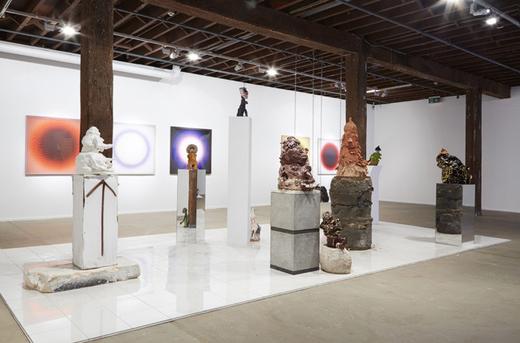 Elephant Island, 2014, installation view, Artspace, Sydney, Photo: Zan Wimberley
Elephant Island, 2014, installation view, Artspace, Sydney, Photo: Zan Wimberley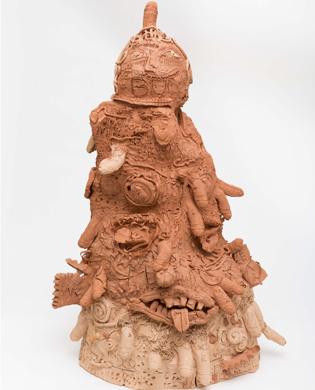 Idol, 2014, red terracotta, 89 x 60 x 46 cm. Image © and courtesy of the artist and Gallery 9, Sydney.
Idol, 2014, red terracotta, 89 x 60 x 46 cm. Image © and courtesy of the artist and Gallery 9, Sydney. Blowhole 2, 2014, red terracotta, white earthenware, glaze, gold lustre and platinum lustre. Image © and courtesy of the artist and Gallery 9, Sydney.
Blowhole 2, 2014, red terracotta, white earthenware, glaze, gold lustre and platinum lustre. Image © and courtesy of the artist and Gallery 9, Sydney.
Born in Colombo, Sri Lanka and growing up in Lidcombe, NSW, Ramesh Mario Nithiyendran explained to me that moving to Paddington to study was something of a culture shift, one he did not necessarily embrace. However he explains he was drawn to the arts scene, during breaks in his classes he would haunt various local galleries and bookshops. Starting with a Fine Arts Degree with Honours before completing a Master of Fine Arts, Ramesh has spent a total of 7 years at UNSWA&D. He embraced and enjoyed taking up as many diverse mediums as possible during this time and values the community available to him and the opportunities and the facilities he was given to produce work and to exhibit.
His current primary practice is working with ceramics and sculpture. The list of inspirations for Nithiyendran in his art practice includes religion, art history, atheism, porn, personal experience and the internet. He is interested in gender representation and the symbolism and ideology surrounding gender identity. In particular, Nithiyendran is interested in cultural paradigms of phallus worship. Much of his work stems from the ideology and iconography of Catholicism and Hinduism with which he grew up, and is concerned with modern limitations of culture and civilisation, exploring pre-colonial portrayals of the masculine.
The images below come from his submission in the NSW Visual Arts Fellowship exhibition at Artspace in 2014. The ceramic works explore a sense of eroticism, the abject and the profane, while the gender ambiguous figures installed on plinths in the gallery space also reference the sacred.
Nithiyendran describes his practice as a ‘hand-based practice’, wherein seeing traces of the artist’s process in the work appeals to him. He consciously abates the trend towards the digital in contemporary art practice in order to value the humanism in art practice.
I asked Nithiyendran what was up next. He replied ‘I’m trying pretty hard to keep on top of things!’ Nithiyendran recently received the NSW Visual Arts Fellowship (Emerging) so he is busy planning residencies in Europe and India. He told me he is also preparing for a residency at the Claymarch Gimhae Museum in Korea under the mentorship of contemporary ceramics artist Vipoo Srivilasa in July this year. In that same month Nithiyendran will exhibit as part of the Australian Ceramics Triennale and will show work at Sydney Contemporary in September, as well as a solo show he has planned for next year. It is an exciting time.
Ramesh Mario Nithiyendran
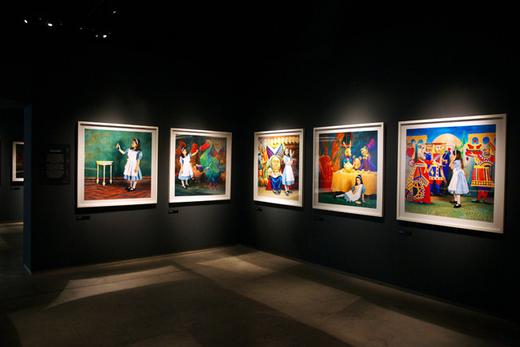 Installation from Tales from Elsewhere, 2012. Courtesy and © ACP
Installation from Tales from Elsewhere, 2012. Courtesy and © ACP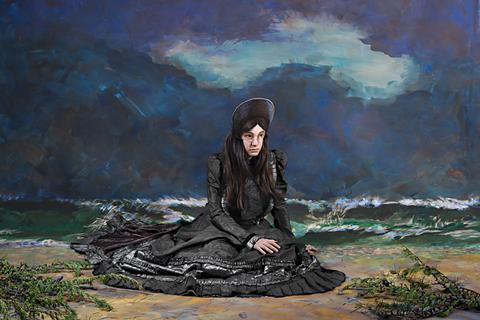 The immigrant is part of Papapetrou’s series ‘Lost Psyche’ shown at Still Gallery last year Courtesy and © Polixeni Papapetrou
The immigrant is part of Papapetrou’s series ‘Lost Psyche’ shown at Still Gallery last year Courtesy and © Polixeni Papapetrou
Critically acclaimed photographer Polixeni Papapetrou is one of Australia’s leading contemporary artists. Papapetrou told me that as a young photographer she ‘thought nothing of a trip of to Sydney’, including Paddington, from her Melbourne home to see inspiring work. Papapetrou regaled the Paddington art scene in the 80s and thought of the area as full of possibilities. Then, Paddington offered a bohemian environment where she as a young, impressionable woman, Papapetrou was able to imagine herself as an artist. She describes the engaging and inspiring vibe of the neighbourhood that gave her ‘permission to belong to this scene’. She mentions the original Stills gallery when it was in just a terrace house, and remembers the inspiring scene of Oxford Street including the couple of times she has worked as an official photographer for the Mardi Gras, ‘only on Oxford Street!’ she said. Papapetrou speaks fondly of the ACP at this time describing it as ‘the only dedicated public space for photography. The exhibitions and the magazine Photofile became pivotal reference points and a destination for me’.
The ACP has shown Papapetrou several times throughout her nearly 20 year career, including the acclaimed international touring exhibition Photographica Australis organised by ACP in conjunction with the Australia Council for Arts, the Australian Embassy in Spain, and the Dirección General de Archivos, Museos y Bibliotecas de la Consejería de las Artes de la Comunidad de Madrid to represent of the state of contemporary Australian art. In 2012 ACP exhibited her first major retrospective Tales from Elsewhere. The works chosen centred on over a decade of collaborations between the artist and her children, Olympia and Solomon. Among these included her works Dreamchild, 2003 and Wonderland, 2004 in which Papapetrou re-stages Lewis Caroll’s works. These works represent a theatre of imagination; of child’s play and adult perceptions fantasy and reality. Papapetrou also reflects on the nature of performance, and its codes and implications.
Papapetrou identifies how her works reveal herself in many ways. Theatre and literature and the visual arts canon are deep influences in her work. The 19th century tableau vivant photography is present in Papapetrou’s aesthetic, from her use of props to the lack of depth of field in her work. Her early works are often formed from re-creations of influences from literary sources. She also references the subconscious as an important influence, elements of the unconscious become recognisable as she creates her pictures, bringing a multilayered personal experience to her work. Her series Lost Psyche most evidently shows an exploration of the artist within each archetype represented. The characters chosen represent old world characters. The masked figures portray types lost between dreams and reality. Papapetrou seeks to use the medium of photography to capture and fix down such liminal characters, to stabilise The Daydreamer, The Storyteller or The Immigrant, if not for just a moment.
Papapetrou’s recent grants include the International Travel Grant from the Australia Council in 2014, New Work grants from the Australia Council for the Arts in 2009, 2012 and 2014, and the Josephine Ulrick and Win Schubert Photography Award in 2009. Papapetrou is currently showing Elvis Immortal, at Ararat Regional Art Gallery, Victoria. Last year alone saw her work exhibited on numerous occasions nationally and internationally, including Episodes: Australian Photography Now, the 13th Dong Gang International Photo Festival, Korea and Collection Conversations: Childhood, The Museum of Fine Arts, St Petersburg, Florida. She is represented by Stills Gallery in Paddington, Sydney, Jenkins Johnson Gallery in New York and ARTITLED!, Herpen, The Netherlands.
Trent Parke
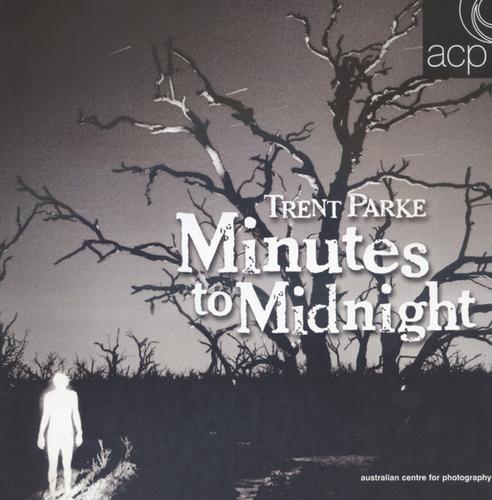 Minutes to Midnight ACP roomnotes cover, 2005.
Minutes to Midnight ACP roomnotes cover, 2005.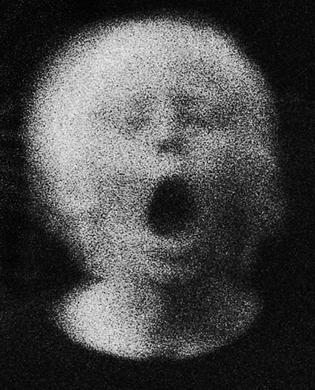 No 376 Candid portrait of a boy on a street corner, Adelaide, 2013, from the series The Camera is God (street portrait series), Pigment print, courtesy Stills Gallery © Trent Parke.
No 376 Candid portrait of a boy on a street corner, Adelaide, 2013, from the series The Camera is God (street portrait series), Pigment print, courtesy Stills Gallery © Trent Parke.
Internationally acclaimed photographer Trent Parke is famed for capturing the beauty as well as the reality of contemporary Australian life. His documentary style and the personal undertones to his work set him apart as one of the greats of his generation. Parke is the only full Australian member of the esteemed international Magnum Photos Agency, the co-operative set up post-WWII by the likes of Robert Capa and Henri Cartier-Bresson.
During his work as a sports photographer for News Ltd. Parke used the latest digital equipment available, yet in his personal projects he opts to use film and analogue processing techniques. From childhood, using his mother’s Pentax Spotomatic and the laundry as a converted darkroom, Parke has always enjoyed being hands-on with the development of his photographs. During the road trip in 2003 that would result in his seminal series Minutes to Midnight, Parke developed his film as he travelled, on the beach or at a camp-site, wherever he could. Parke is a most patient of photographers. When he comes across a light effect or an interesting technique he will work assiduously to master it, sometimes for months.
In 2005, Minutes to Midnight was exhibited for the first time at the Australian Centre for Photography as part of the Sydney Arts Festival and was logged at the time as the most highly attended exhibition in the ACP’s recorded history. The exhibition earned Parke great critical success. This enigmatic series resulted from a 90000km road trip, over two years, with partner, and fellow photographer Narelle Autio. The series deploys Parke’s documentary background and his black and white photographic imagination to portray an epic visual narrative of the realism and romanticism of Australia’s emotional and physical landscape at the time. In 2003, when he was only part way through, Parke was awarded the prestigious W. Eugene Smith Grant in Humanistic Photography that allowed him to complete for this body of work.
The Christmas Tree Bucket was launched at the ACP in 2008. This colour series documents the gothic uncanny of Christmas. Through a dark sense of humour and a touch of the absurd, Parke’s images attack and celebrate Australian suburbia, family and excess of the festive season. His work shows influences from William Eggleston, Stephen Shore, and Garry Winogrand, however, Parke’s propensity for capturing enigmatic and often witty moments very much shows his individual vision.
The Camera is God was first exhibited at Stills Gallery in Paddington in 2014. The series depicts portraits that Parke captured of people crossing King William Street in Adelaide over the course of almost a year. Moving beyond the documentary style of Parke’s street photography, in these works the artist has selected peoples’ faces in his photography and enlarged them as the final prints for his show. Reminiscent of pixelated digital security footage, the portraits reflect ideas of surveillance and voyeurism. At a closer glance the faces become painterly in their abstraction, as the materiality of the black and white 35mm film is revealed. The accentuated film grain obscures the profile of each individual and embeds a sense of mysticism in each image. Parke’s camera is omniscient and indiscriminate, as each work examines the human spirit.
Parke has received several awards, including the inaugural Prudential Eye Award for Photography in Singapore, five Gold Lenses from the International Olympic Committee, the World Press Photo Awards in 1999, 2000, 2001 and 2005 and the Canon Photo Essay Prize in the 2000 Sasakawa World Sports Awards. Parke’s work has been featured in exhibitions and art fairs across the globe and is held in major institutional collections, including the National Gallery of Australia, the Museum of Contemporary Art, the National Gallery of Victoria, the Art Gallery of NSW, Artbank, Magnum London and Magnum Paris.
Izabela Pluta
 Image 1: Collapse, 2015, pigment print on photo rag. © Izabela Pluta
Image 1: Collapse, 2015, pigment print on photo rag. © Izabela Pluta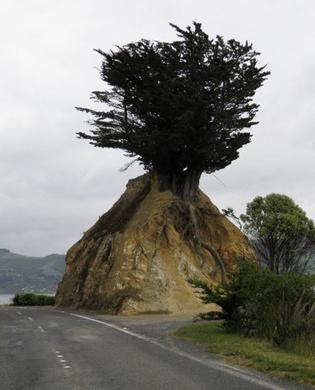 Images 2 & 3: Study for Sham Ruin #3 & #4, Pigment print. © Izabela Pluta
Images 2 & 3: Study for Sham Ruin #3 & #4, Pigment print. © Izabela Pluta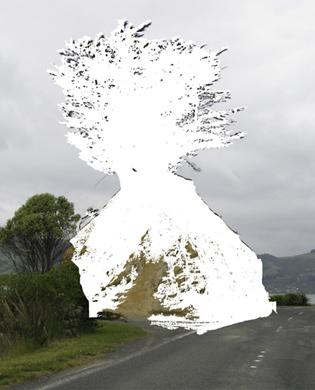 Images 2 & 3: Study for Sham Ruin #3 & #4, Pigment print. © Izabela Pluta
Images 2 & 3: Study for Sham Ruin #3 & #4, Pigment print. © Izabela Pluta
Izabela Pluta is a Sydney-based, Polish born, photo media and installation artist. Her work has been exhibited widely across Australia.
Pluta’s photographic practice documents scenes that evoke a longing for place. Her works may be seen as a reflection upon contemporary global social interaction, wherein the physicality of place, the geography of people, and the connection to landscape, is wholly removed from experience. The natural environment becomes merely a ‘setting’ in our psyche — seen in movies, imagined in a conversation, or set as a computer desktop background.
Her imagery explores how industry and urbanisation have shifted our experience of place. Her work questions notions of permanence and belonging, documenting echoes of the familiar and traces of lived experience in an environment. In this way, Pluta addresses how place relates to identity, memory, and nostalgia.
In her latest exhibition Excavations at the Dianne Tanzer Gallery in February this year, Pluta included a diptych work titled Collapse. The image depicts a roof structure, stable but crumbling. The play with movement and stasis in the work and title reflects a philosophy of memory and the ephemeral present in Pluta’s practice. She employs the photographic medium in order to arrest varying states of decay in the landscape.
Another of Pluta’s striking series, Study for a Sham Ruin, 2012, pairs identical mirror images. The object of the image; a primordial-looking tree, or an historical ruin, is shown in straight, documentary style, and is covered by white acrylic paint in the mirror image. The materiality of the acrylic paint, and the physical act of covering the scene suggest a capturing of a temporal and spatial moment; of arresting recollection and reality.
In 2006 Pluta received the Australia Council for the Arts Studio residency in Barcelona. In 2008 she won a Freedman Foundation Traveling Scholarship for Emerging Artists and she received an Australia Council New Work Grant. In 2010 she received the Qantas Foundation Contemporary Art Award (NSW). In 2012 Pluta was shortlisted for Artists-of-the-year-in-review at the Scope Art Show in New York. Pluta has also completed several residencies, including, in 2008, receiving an Ian Potter Cultural Grant for a residency at the Cité des Arts International in Paris, and she completed a UK Academic Research Exchange at the Art and Design Research Institute in 2011.
Pluta has been invited to participate in the Mildura Palimpsest Biennale #10- Everywhere All at Once …Here, curated by Jonathan Kimberley & Helen Vivian, in October this year. She is currently completing her PhD at the University of Wollongong.
Pluta has a Masters of Fine Arts from UNSWA+D and currently lectures in Photomedia at the university.
Pluta is represented by Dianne Tanzer Gallery + Projects, Melbourne.
Jas Shennan
Jas Shennan is a tutor in editing and post-production at Metro Screen. He has 40 years experience in editing and producing for television including Masterchef, Top Gear Australia, Secret Millionaire, Location Location Location, Border Security, Chopper Rescue, Missing Persons and The Biggest Loser.
Shennan studied at the London Film School, under film legends Mike Leigh and Ken Loach. He then went on to work on the original voyeur-style reality show The Family (1974). This show was produced by Paul Water who later came to Australia to produce Australia’s first every reality TV show Sylvania Waters, which began in the early nineties.
Shennan was one of the first in Australia to own an Avid Media Composer system and was a pioneer of non-linear editing. This style of editing allows for selective access to specific video frames in digital footage, rather than previous linear, long form systems of videotape and film. This revolutionized the speed at which editing could be achieved, and the selection of clips in large quantities of footage accessible and fast. Shennan used this system for specialising in editing for reality and lifestyle, commercial, corporate and documentary work. Shennan’s editing career has followed the rapid pace of contemporary television viewing while still creating entertaining and meaningful stories.
Sheenan has also released two independent skydiving films, one of his past-times, including the early Australian free fall films Walk on Air, for which he employed ex-military 16mm gun cameras.
He remains the director of Avid Media Productions and Avid Editing Pty Limited, well-known production and post-production house in Sydney.
This post is part of the Art Month Event Creative Paddington taking place on March 7th in conjunction with Metro Screen and UNSW Art & Design.
Antony Waddington
Antony Waddington is a lecturer in Producing and Business Management in Screen and Media at Metro Screen.
He began as an actor in Australian theatre and television having studied acting at the Sydney Theatre Company and The London Academy of Music and Dramatic Art before earning his BA from UTS in film production and screen writing and an MA in Performance Studies from Sydney University. Waddington also attended the Australian Film, Television and Radio School during this time, completing supplementary courses in Script Editing and Cinema Studio. He has worked for companies like the State Theatre Company of South Australia, Sydney Theatre Company, New England Theatre Company and can be seen in numerous television series including Water Rats and A Country Practice. In conjunction with his acting career Waddington began working as an Associate Producer with Paper Bark Films in the late 80s. He helped develop several training films for the industry and worked on music videos for EMI, Sony Music, WEA and Mushroom Records, including clips for the Divinyls, Icehouse and Kate Ceberano.
Waddington is best known for his work as a producer. His film credits include Associate Producer on Photographers of Australia: Dupain, Sievers, Moore (1992), Executive producer on Tides of Passage (1994), Producer on Spirits of the Carnival (1996). In 2011 he developed and produced his first feature film, the adaptation of Patrick White’s novel The Eye of the Storm. Directed by Fred Schepisi and starring Charlotte Rampling, Judy Davis and Geoffrey Rush, the film was a critical success. This film went on to win the critics award at the Melbourne International Film Festival, several AACTA awards including Best Actress (Judy Davis), the Rome Film Festival Special Jury Prize and Vale Film Festival’s Best Film Award and was nominated for Inside Film Awards Best Feature Film and AFI Members’ Choice Award, Best Film.
Waddington continues to work on feature films and documentary projects, contributing to the wealth of Australian cinema.
This post is part of the Art Month event Creative Paddington taking place on March 7th in conjunction with Metro Screen and UNSW Art & Design.
Nicole Welch
 Image: courtesy and © Nicole Welch, Apparitions #4 – Projection -The Upper Nepean, 1889, WC Piguenit pigment ink, facemounted, 2014.
Image: courtesy and © Nicole Welch, Apparitions #4 – Projection -The Upper Nepean, 1889, WC Piguenit pigment ink, facemounted, 2014.
Nicole Welch is a Bathurst-based installation and photo-media artist, centring upon site-specific photographs of media installations.
Much of Welch’s work has developed from research into the history of the area in and around Bathurst, where she grew up and has returned to live. She employs a blend of contemporary photo-realism and a heavy dose of Romantic aesthetics from the masters, including Eugene Von Guerard and Nicholas Chevalier. In her recent Apparitions, Welch projected circular fragments of Australian Romantic paintings onto selected terrain. Here, Welch plays with a layered view of landscape; through historic images and today’s reality. Welch explains: ‘I deliberately do not use Photoshop, this results in a truly incongruous image that records in real time both past and present ideologies.’ Her cinematographic photo-works are made with patience, through long shoots using cranes, generators, spotlights and projectors, all taken to a chosen location where Welch camps out for the optimum light and ambience. She explains that; ‘through the placement of specific historical objects into the landscape and by throwing projections onto the terrain I aim to illuminate representations of Australia from the past by bringing them into the present.’
In the early nineteenth century, Australian painters, notably the impressionist painters of the Heidelberg School, intended to break with the European Enlightenment lens through which the unique Australian landscape was being depicted by the Romantics. Welch, creates contemporary works in much the same vein, she aims to break the European sensibility, as seen in work of William Piguenit and John Skinner Prout, in the celebration of the Australian landscape. She reveals the haunting cultural history embedded in our landscapes and the idealism with which many have come to experience the land since colonisation.
Welch described her first experience of Paddington at 16, when she and a friend came to Sydney for a COFA summer school photography program. She remembers The Arts Hotel on Oxford Street, the fashion shops, cafes, Roslyn Oxley Gallery and the ACP as ‘a baptism by fire for us country girls.’
I asked Welch about her experience at the University of NSW Art and Design, Welch is studying part-time, still living in Bathurst. She was very positive about the support she has received and the connections she has made: she describes how much she enjoyed the exposure to other practitioners’ work in the research phase of her own studies.
In 2011 Welch was the recipient of the NAVA Windmill Trust Scholarship. Her work is held in the collections of Bathurst Regional Art Gallery, the Canberra School of Art Collection, ANU, and the National Library of Australia. She is currently preparing her next project ‘Eastern Interior: explorations from Bathurst to Albury,’ in which the artist will follow the early nineteenth century exploration trails of Thomas Mitchell. Welch has chosen this, the Bicentennial year of the settlement of Bathurst to create her own media installations in significant locations and landmarks. The body of work will be exhibited at the Brenda May Gallery in Sydney and the renamed Murray Art Museum Albury at the end of the year.
Nicole Welch is represented by Brenda May Gallery
William Yang
William Yang’s photographs pepper Sydney’s cultural identity over the past 4 decades. He is synonymous with Sydney’s queer and art communities through the 70s, 80s and 90s for his candid and casual portraits. Yang has pointedly harnessed the photographic medium to reflect on narrative, history and identity politics. For Yang, his work makes up a diary in which the public, political become personal expressions for the artist. His work is constantly filtered through the lens of autobiography, although often voyeuristic he documents worlds he is part of, from the bohemian underground of Sydney to portraits of cultural identity, in particular Yang’s Australian-Chinese heritage.
Yang has experimented with the photographic medium in order to portray his stories. In the 1980s he developed his practice as a performance artist. He has transformed his photographs into multimedia performances, of slideshow and storytelling, where theatricality and documentary realism blend. His work also pushes the visual narrative of the photograph by augmenting handwritten text over his image. This adds to the personal nature of his work as Yang’s handwriting intimately associates the image with the artist. His photography becomes discursive in the layers of image and notes. His work slips between styles, evading traditional photographic codes. His work is intuitive, he is considered in his study of character, both in his social interactions and through his photographic portraiture.
I was able to get snippets from the master storyteller of his memories of Paddington for this profile. Yang’s first solo exhibition Sydneyphiles, was held at the ACP in 1977. He expressed how the show had a big impact, launching his career as a photographer. He went on to exhibit in the group show Complicity, in 2000, and then again in his exhibition Claiming China in 2008.
Yang has strong connections to Paddington and fond memories of the arts history in the neighborhood. In the early 70s he co-wrote The Dreamers with Andrish St Claire that was put on at the church hall on Oxford Street, also, at this time he recounts an opening of Brett Whiteley’s work he attended at Paddington’s Bonython Gallery, that made a huge impression on the photographer. Furthermore, both Stills, Yang’s main gallery and Barry Stern Gallery that shows his work, are situated in Paddington.
Most fondly, Yang remembers the parties and events at the Paddington Town Hall. He described some of the events stating ‘I went to my first gay dance there in the early seventies and I’ve never forgotten it’. In reference to this time, in 2013 the Town Hall hosted the launch of The Pride History ‘100 voices’ a collection of oral histories of the development of the queer community in Sydney, for which Yang photographed.
During the 1970s and 80s the Paddington Town Hall was a hub at the height of the gay and lesbian scene and home to the early RAT parties of Jac Vidgen, and Yang consistently chronicled this era, capturing the mood and documenting the wild and wonderful events surrounding queer liberation and pride in the building. The legendary drag-theatre troop Sylvia and the Synthetics performed at the town hall on numerous occasions. Yang captured the crowds, the glam and the outrageousness of their performances. Included here are images from a performance of the Synthetics, with the Diamonds and Wendy Saddington (see images below). Yang is currently promoting the screenings of his film adaptation of his performance piece Blood Links in Sydney and Melbourne

